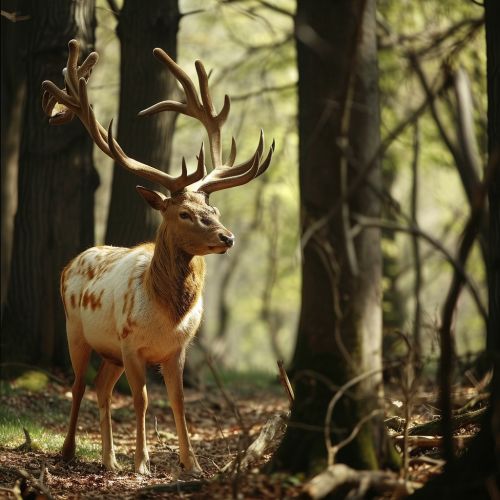Golden Hind of Artemis
Origin and Mythology
The Golden Hind of Artemis, also known as the Ceryneian Hind, is a creature from ancient Greek mythology. It is one of the many creatures associated with Artemis, the Greek goddess of the hunt, wild animals, wilderness, childbirth, virginity and protector of young girls. The Golden Hind is most famously known for its role in the third labour of Heracles (Roman equivalent: Hercules).
According to the myth, the Golden Hind was a magnificent creature with golden fur and antlers made of gold. It was said to be larger than a bull and had hooves of bronze or iron. The Golden Hind was sacred to Artemis, who had captured it on the mountain of Cerynea and had intended to dedicate it to the goddess Demeter.


Heracles and the Third Labour
In the mythological story of Heracles, the hero was given twelve labours as a penance for killing his wife and children in a fit of madness, induced by the goddess Hera. The third of these labours was to capture the Golden Hind of Artemis.
Heracles chased the Golden Hind for a year before he was able to capture it. He finally caught the creature while it was sleeping, and carried it back to Eurystheus, the king who had assigned him the labours.
Symbolism and Interpretation
The Golden Hind is often seen as a symbol of swiftness and untamed nature. Its golden colour is associated with the divine, and its association with Artemis underscores the goddess's role as the protector of wild animals.
The story of Heracles and the Golden Hind has been interpreted in various ways. Some see it as a tale of persistence and determination, as Heracles had to chase the Hind for a year before he could capture it. Others see it as a story of respect for the divine, as Heracles was careful not to harm the Hind, which was sacred to Artemis.
In Art and Culture
The Golden Hind has been depicted in various forms of art throughout history. It is often shown in scenes of the third labour of Heracles, either being chased by the hero or being carried on his shoulders.
The creature has also been used as a symbol in various cultural contexts. For example, it has been used as a heraldic symbol, representing swiftness and beauty. The Golden Hind also appears in various forms of literature, often as a symbol of elusive beauty or divine favour.
